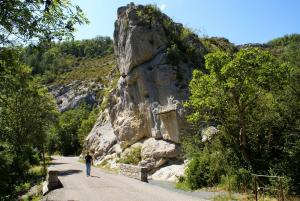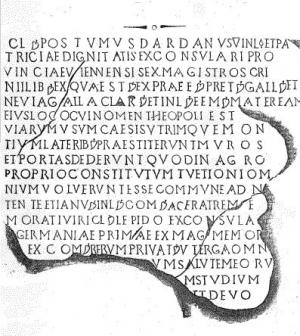The Lost City of Haute-Provence
Alongside the narrow winding road that leads from Sisteron to the mountain village of Saint-Geniez, a stone inscription from the 5th century AD puzzles historians.
Engraved at the foot of a large rock that looms over the road, the text, in Latin, is still clearly legible: it says that a nobleman named Claudius Dardanus, the "Praetorian Prefect" of the Gauls, and his "distinguished and noble" wife Nevia Gallia, "carved out on both sides of the mountain" a road leading to "the place called Theopolis." The 18-line text explains that Theopolis was fortified "with walls and gates" and "established as being in their ownership to be shared for the safety of all."
The stone inscription, locally known as Pierre Écrite, includes no date, however it is generally agreed that it was carved around the year 425 AD at a time when the Western Roman Empire, crumbling under Barbarian pressure, was nearing its end.
What brought the prominent statesman and his wife to this remote and almost inaccessible corner of the Empire is clearly stated in the text at Pierre Écrite: Claudius and Nevia came to establish a community which, in reference to Saint-Augustine, they named Theopolis, the City of God.
There are other examples of Christian communities being established by patrician Roman families in the 5th century. All of them were large estates, more like a village than a villa. What has baffled generations of historians and archaeologists however is that no trace of Theopolis has ever been found. Except for the Pierre Écrite, not a single text mentions Dardanus' City of God, nor has a single stone or artefact ever been linked to it.
Only toponymy, the scientific study of place names, has provided a tentative clue to where Theopolis might have been located. At some distance from Pierre Écrite the mountain hamlet of Théous seems to echo the name of Dardanus' estate.
While historians and archaeologists cannot provide an explanation of the fate of Theopolis and its founders, mystery buffs, amateur explorers and paranormal enthusiasts have written thousands of pages in an attempt to solve "the enigma of the Lost City."
The eerie landscape north of Pierre Écrite; the strange, unnatural-looking rock formations that surround the nearby villages; and the legends that are attached to some neighbouring chapels have provided them with just the right setting to feed their imagination.




